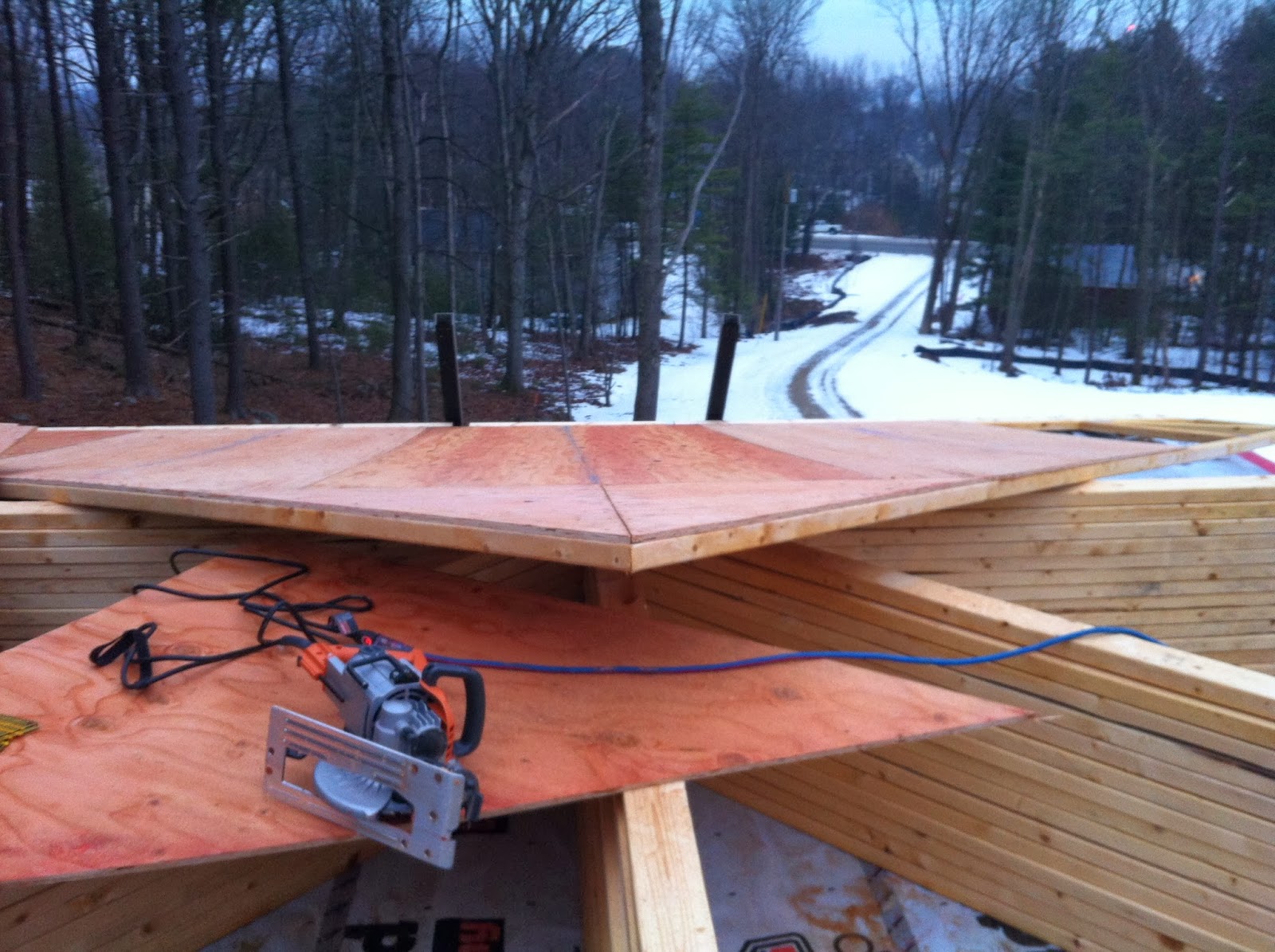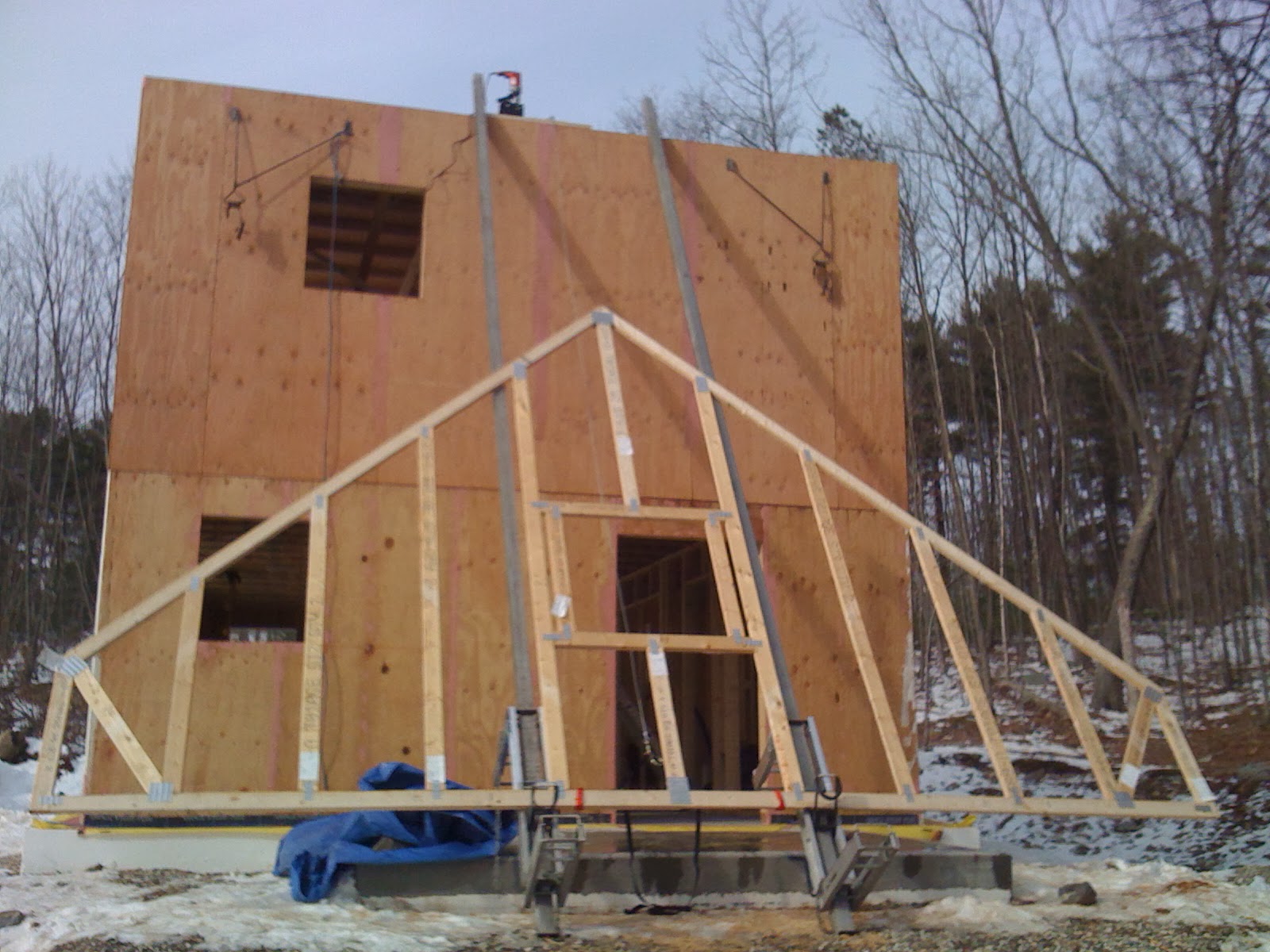I am sorry it has been so long since the last update. I will catch you up to Jake's progress as quickly as possible!
 |
| Waterproofing - during a particularly cold spell the last week of January we used a heat gun to heat up the butyl tape (black) and the concrete so it would stick. Jake had already coated the concrete with liquid flashing (pink). |
 |
| This is the waterproofing between the foundation and the walls finally complete. Jake used special fabric corners made for showers to solve the "how to seal the corners" problem. No one ever shows how they did the corners in magazines or on You Tube. |
Below is video of Jake's amazing contraption that he used to bring the roof trusses and other material up to the roof by himself.
 |
| Once the trusses were on top, we had to put plywood on the gable ends. |
 |
| Fast forward two weeks, and the gable ends are up with some roof trusses, and sheathing, too. |
 |
| Jake's parents were out again from Chicago to help out! |
 |
| Our two Dads pulling sheathing up on to the roof with Jake bringing it out of the second story windows. |
 |
| The view from behind. |
As of today, there are only three roof trusses left to put up, plus the majority of the sheathing. Still lots of snow hampering our progress!












